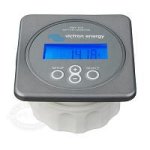ssobol
Active member
- Joined
- Oct 27, 2012
- Messages
- 3,668
- Reaction score
- 23
- C Dory Year
- 2008
- C Dory Model
- 22 Cruiser
- Vessel Name
- SoBELLE
There have been discussions in this forum of the state of charge of the batteries. Since I usually anchor out and don't have a generator I find that sometimes I get a low voltage indication in the middle of the night (the CO detector starts going off when the voltage is too low).
I was thinking it might be nice to have a SOC indicator for both batteries so I can monitor the voltage and maybe top them up before turning in for the night.
I've seen battery level indicators online but they are simple voltmeters. Can anyone recommend a decent SOC indicator (that's a bit more accurate than just a voltmeter) at a reasonable cost?
I was thinking it might be nice to have a SOC indicator for both batteries so I can monitor the voltage and maybe top them up before turning in for the night.
I've seen battery level indicators online but they are simple voltmeters. Can anyone recommend a decent SOC indicator (that's a bit more accurate than just a voltmeter) at a reasonable cost?

